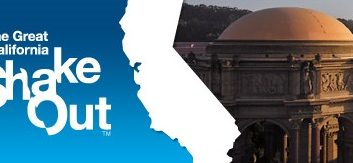NPR Senior Product Manager of Content Production David Julian Gray and Senior Software Engineer/Architect Mike Pilone are developing a new metadata ecosystem for the Public Radio Satellite System.
They’ll talk about it in their presentation “A Federated System for Public Media Metadata Delivery” on Sunday morning of the NAB Show as part of the Broadcast Engineering Conference.
The MetaPub platform is intended to bridge the gap between content producers and the software that populates radio displays and streaming audio applications.
More listeners are consuming audio products through such devices, including spoken word formats, yet many stations populate the display with, at best, a name of a program, while others display no information at all.
The MetaPub system is being developed with the input of multiple PRSS content providers such as National Public Radio, American Public Media, Public Radio International and the Public Broadcasting Service. Other notable contributors include Jim Duff, director, product development for PRSS. Kyle Wesloh, director broadcast production and operations of Minnesota Public Radio, has been an active participant, making sure the “Classical 24” stream metadata was available early in the project.
WORKS IN BACKGROUND

Fig. 1
Credit: Courtesy NP An overview of the system is shown in Fig. 1.
Instead of asking content producers to add new processes to their routines — processes that could be overlooked — MetaPub works within their existing workflows and interfaces.
It accesses the information in the background by using APIs with a variety of existing content management systems. The information is extracted from these systems, normalized from program to program and content provider to content provider and published in a standard JSON (JavaScript Object Notation) lightweight data-interchange format for other middleware products to optimize and send out to radio displays.
Currently the feed is available over the Internet for products to query and obtain data.
For instance, the middleware application can request information for a specific program, date and time; the MetaPub system will provide the information available for that program. As the system grows and matures, its creators envision this information could be provided in real time over the PRSS satellite system itself and through other channels so that specific calls for information may not be needed.
Early integration efforts include TagStation to add visual elements to public radio stations in the NextRadio FM radio application. Efforts also are underway to integrate this information within Arctic Palm’s Center Stage Live CSRDS product to send the data to RDS encoders for analog FM radios, and HD Program Service Data (PSD) for HD Radio displays.
The project is ongoing; new enhancements and features are being considered. Future efforts may include integration into network-specific and station-specific applications and websites, something the NPR digital/online and other teams are looking at now.

Fig. 2
Credit: Morgan McCloy/NPR Currently supported content includes the name of the audio piece; the name of the program with which it is associated; the artist or author of the content; and an image associated with the piece. For example, Fig. 2 shows an example of a report during “Morning Edition” by Allison Aubrey named “A Diet High in Fiber,” with an associated image of foods discussed in the story.
MORE TO SHARE
The system supports offsets, so the information could change at various times in a single program.
For instance, the radio display does not necessarily need to be stuck on the same information all the time; it can change dynamically as the topic or story changes within a program segment.
For currently supported NPR-produced news magazine shows and “Classical 24,” MetaPub provides live streams synchronized with the material “now playing.” Stations playing through a live stream can choose “now playing” or if they offset the material, there are mechanisms to align the metadata with their audio stream. Either way, they have to have accurate metadata dynamically updated to match what the station is playing.
Also in development are embedded links so that, on supported platforms, while someone was listening to a news story on a smartphone, for instance, they could click a link to help them find detailed information or associated content like an article about the topic.
A number of stations are involved in testing the system, representing a mix of markets and technical resources; the organizers are not looking for additional test stations right now, but they anticipate seeking more stations to participate soon. As the national feeds begin to share more content through MetaPub, stations will have that much more content to share.
So what is the project timeframe? “At this point we have been engaged in a limited proof-of-concept project for which a base feature set system is now up and running,” David Julian Gray said. “At the same time we have started work to understand the business case. Assuming the effort can be financially self-sustaining, we estimate head-end rollout of a full feature set by the PRSS would take about 18 months. The time for a full system-wide rollout would depend on the rate of adoption by producers and stations and the capacity of the PRSS to keep pace with the demand.”
As radio becomes more visible on updated receiver platforms, i.e. in the automobile center stack, and as radio continues to make its ways into smartphones and tablets, with mobile phone FM reception and streaming content apps, it appears the public radio community is well on its way to making sure it can provide relevant, enriched displays to keep listeners engaged and informed.







